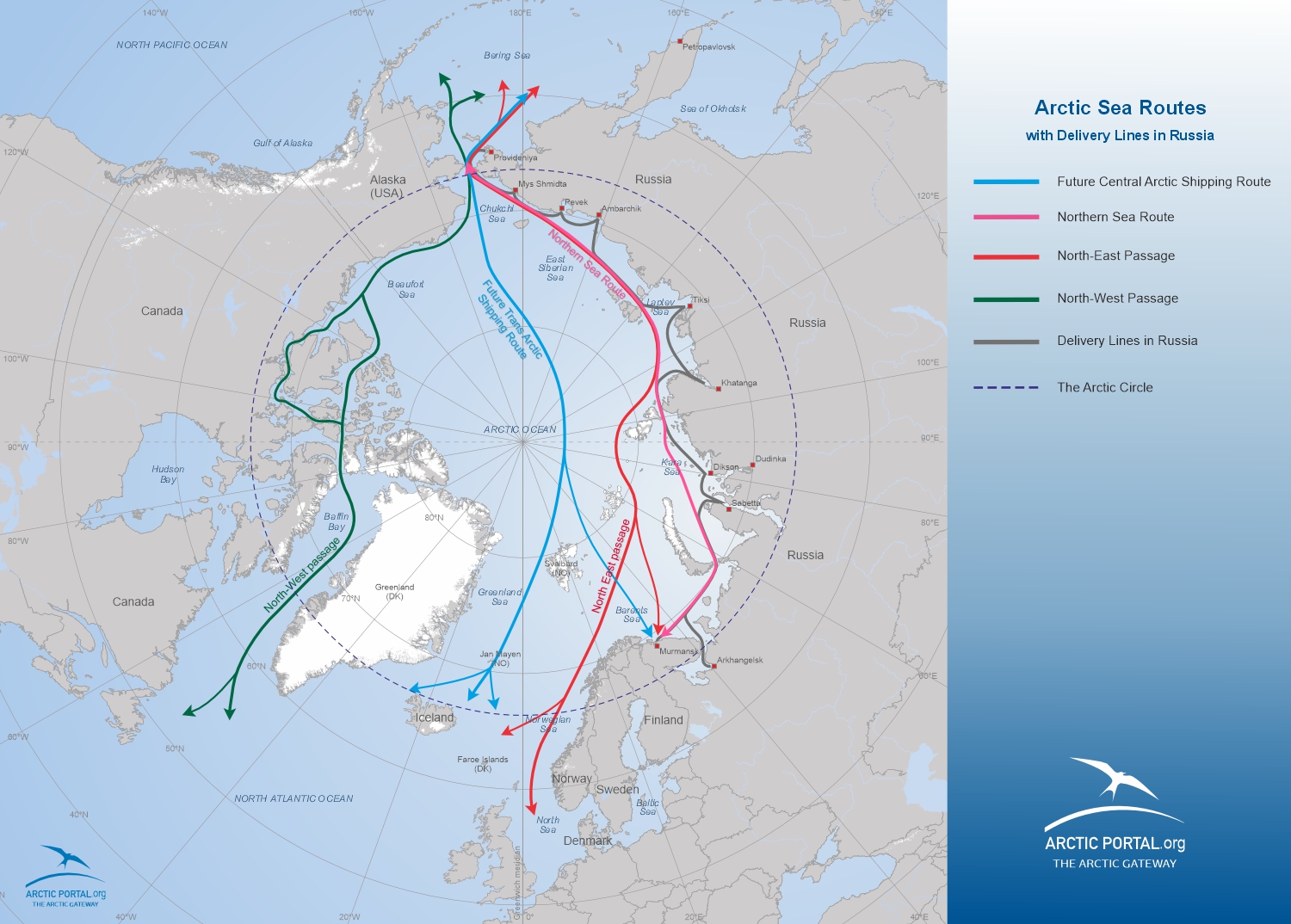 The Arctic ice cap has been receding at an unprecedented rate and recent advancements in shipping technologies, in addition to an increasing interest in the Arctic's resources, have made the Arctic shipping one of the most prominent issues in the northern hemisphere.
The Arctic ice cap has been receding at an unprecedented rate and recent advancements in shipping technologies, in addition to an increasing interest in the Arctic's resources, have made the Arctic shipping one of the most prominent issues in the northern hemisphere.
In the year 2011 a total of 34 vessels used the Northern Sea Route, a significant increase from only 4 in 2010.
With its fleet of polar icebreakers, Russia has been able to use the Northern Sea Route for up to 6 months a year, although such use has thus far been limited to the support of exploration of its own resources and has not yet included international shipping.
Although Trans-Arctic shipping is commonly linked with favorable weather conditions, i.e. warmer climate, ice-free ocean and relatively calm weather, climate is not the only issue encouraging Trans-Arctic shipping.
Currently the main driving force for shipping through the Arctic Sea is transport of oil or gas from Arctic Russia. The discussion on Trans-Arctic shipping evolves, however, also around the issues of global warming, Greenhouse Gas emission restrictions, changes in the geopolitical landscape, possible exploitation of fossil fuel fields in the Arctic and sustainable development in the Arctic. Although those factors do not possess predominant force to encourage Trans-Arctic shipping single-handedly, together they form a great pressure on the global society to prepare for new transportation routes.
The map to the right shows the three sailing routes in the Arctic. The Northern Sea Route is used today, the Northwest route is still closed and further in the future the shortest route is obviously closer to the north pole.
The Arctic routes shorten the travelling distances from Europe to Asia significantly and therefore it is a viable choice for transport for goods between Europe / North-America and Asia.
Visit our Map Gallery the section Maps: Shipping, to discover more maps on the Arctic Sea Routes







